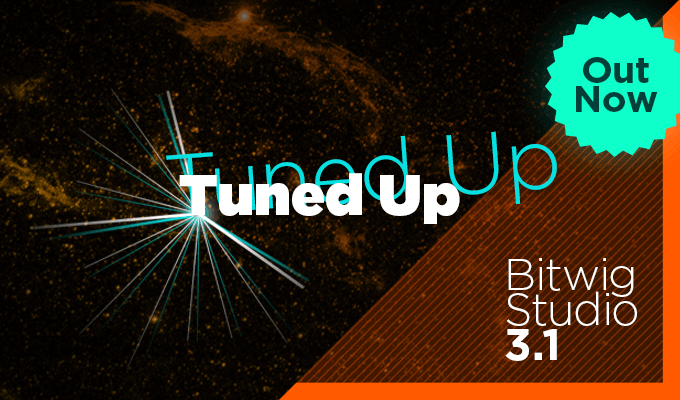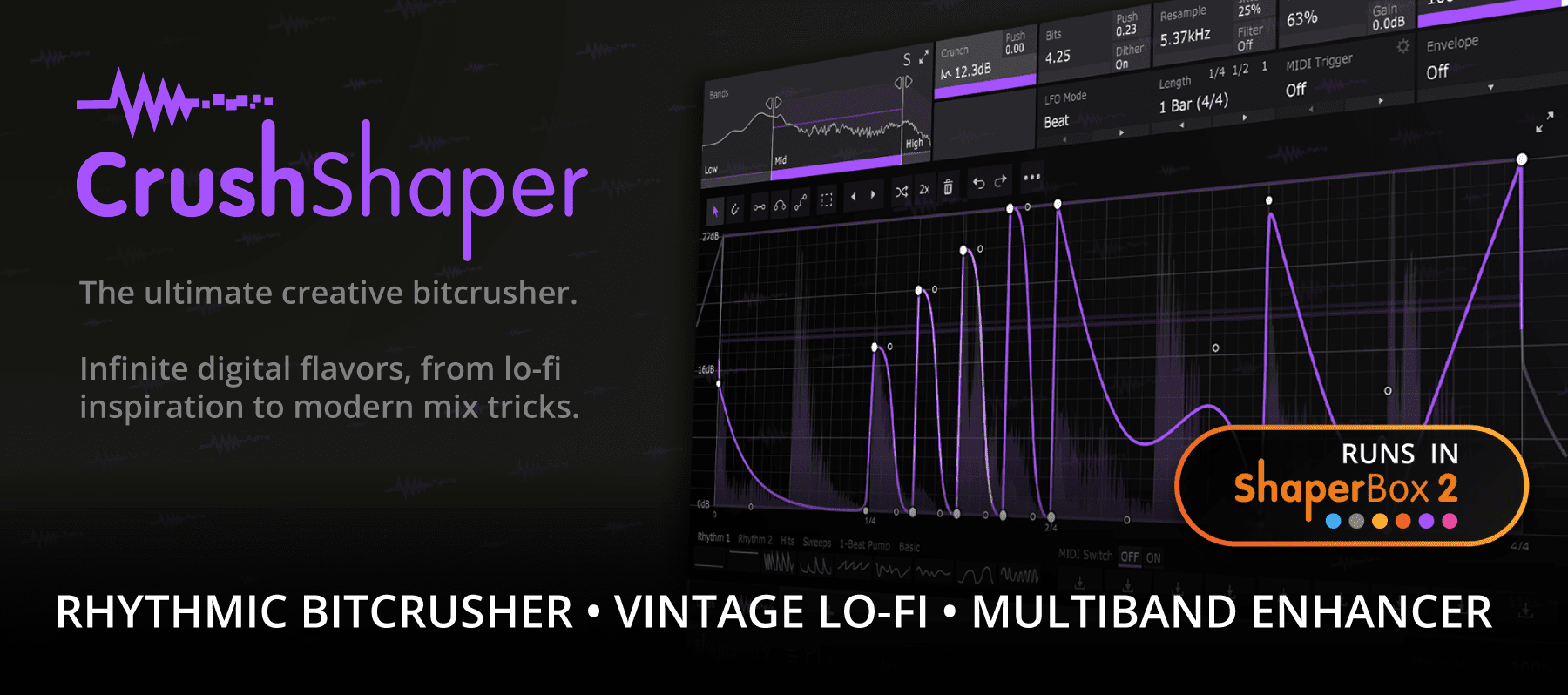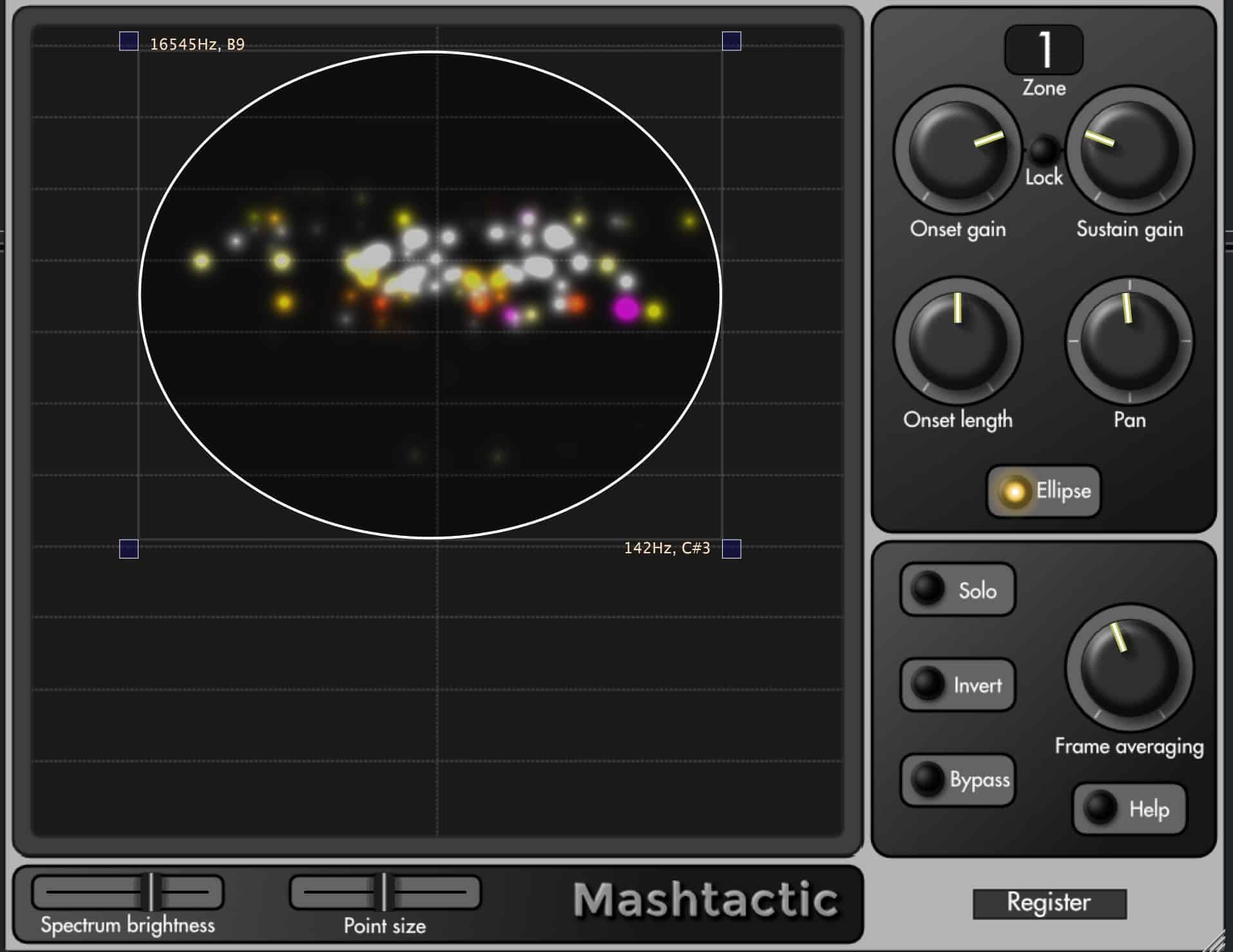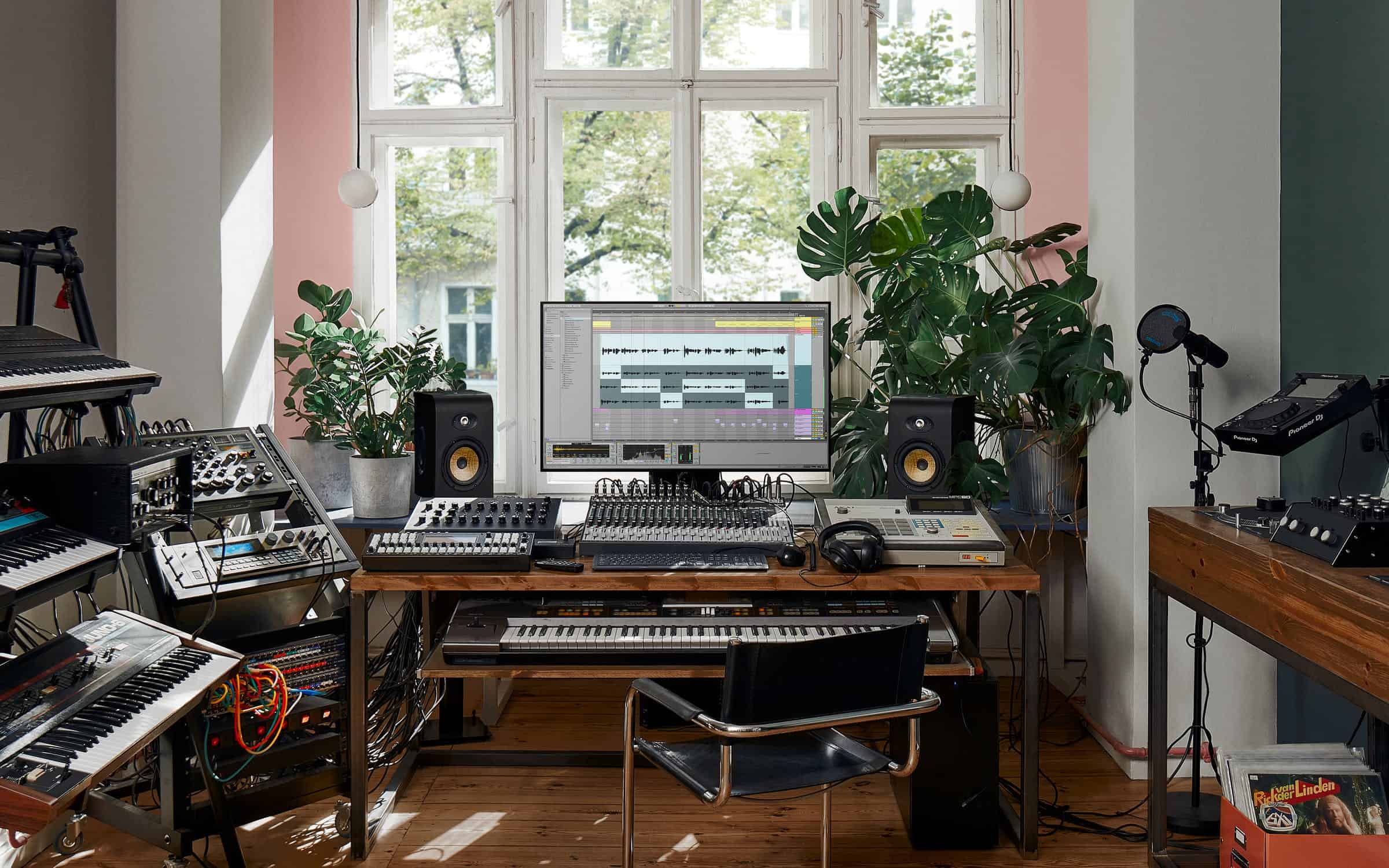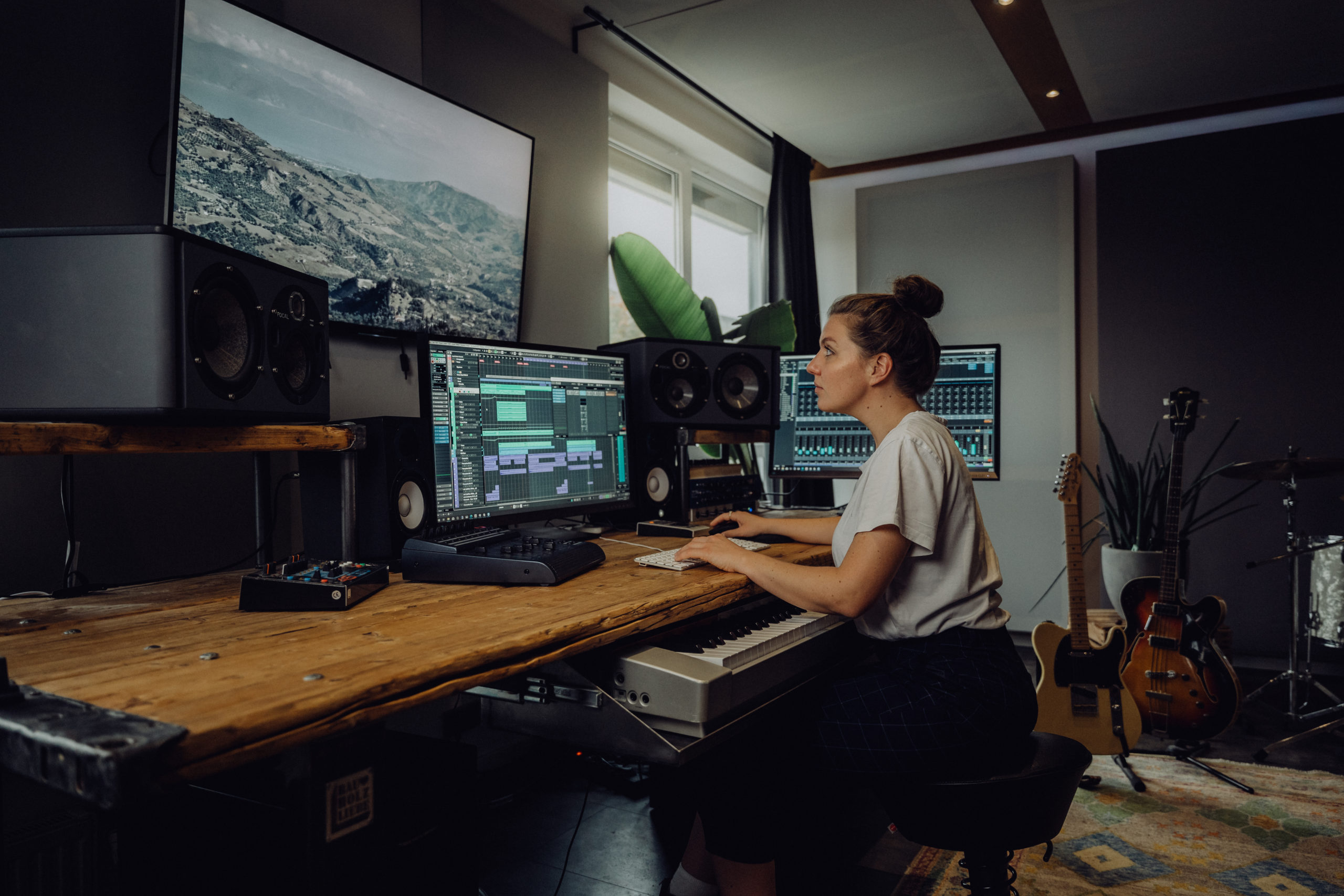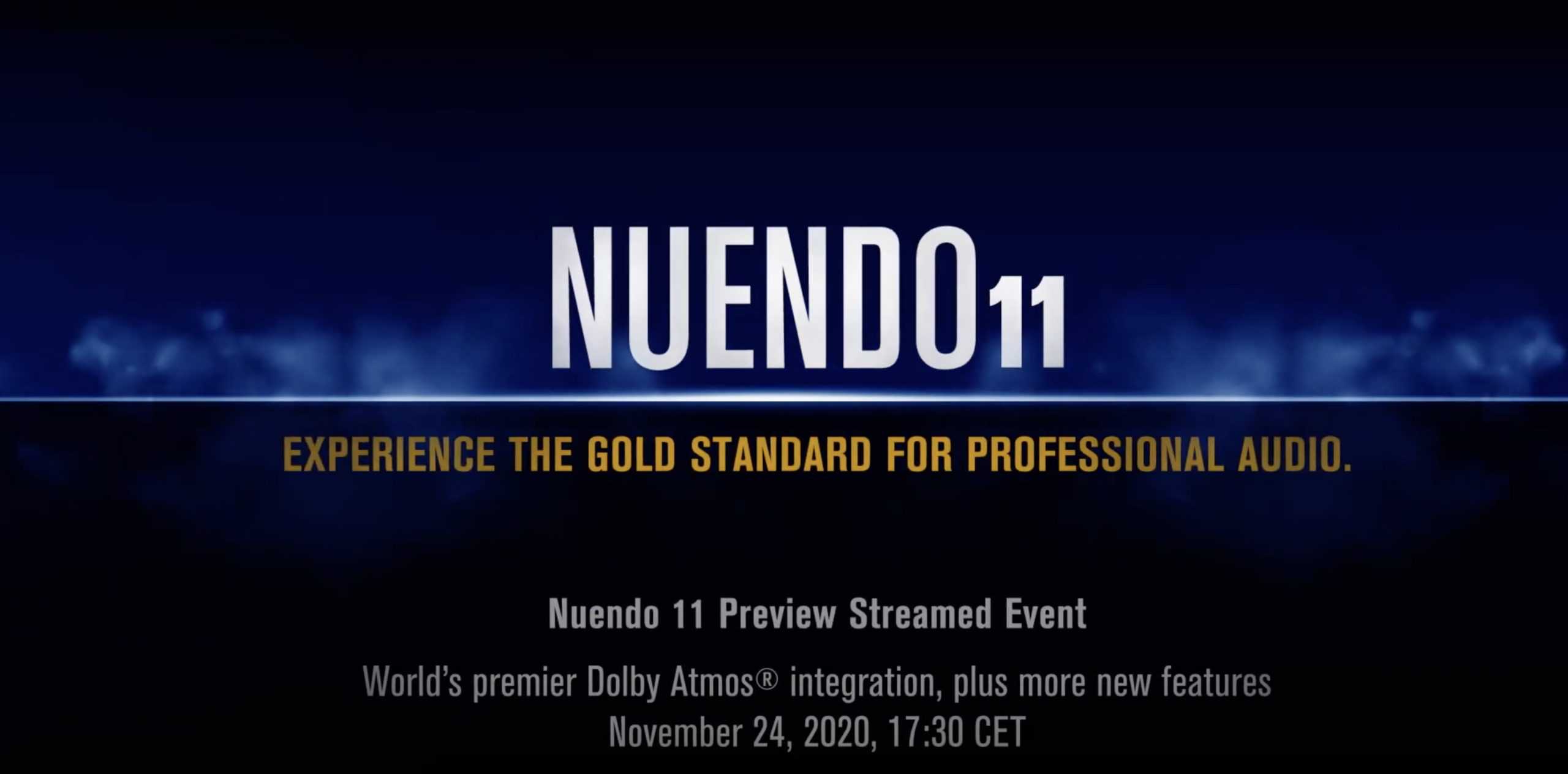BITWIG STUDIO 3.1 is Now Available
Pitch is a fundamental cornerstone of music, and Bitwig Studio 3.1 is tuned up with new exciting ways to work with pitch and scales. Based on Bitwig Studio’s unique way to work with micro-pitch information, our new Note FX device Micro-pitch lets you dynamically retune notes, import existing scales and define your own.
- New device: Micro-pitch
- New modulator: Pitch-12
- New Grid modules: Pluck, Slope ↗, Slope ↘, Follower, Transpose, Pitch → Ø
- Interactive Help view for all Bitwig devices
- Quick Draw, Quick Slice and Slice in Place
- Note Chase
- Cue Level and Cue Mix controls
- Sampler imports standard wavetable WAVs
- Improved tempo detection for audio files
- New controller scripts and Bitwig controller scripts are now open source

MUCH MORE PITCH
Micro-pitch is a new Note FX device that allows you to re-tune your note streams in new ways.

Fine-tune individual notes, transform scales, shrink or expand octaves, play notes that you would never have imagined. Is 440 tuning not doing it for you? Try 432. As with all devices in Bitwig Studio, Micro-pitch parameters can be automated and modulated, which opens up extraordinary possibilities for musicians and sound designers.
You can load Scala (SCL) files directly into the Micro-pitch device, or explore any of the 30+ presets assembled for your enjoyment. The presets are based on historic (Pythagoras, Rousseau) and cultural (Chinese, Javanese) temperaments, as well as the works of Werckmeister, Harry Partch, Wendy Carlos, and more.
The Micro-pitch device works with MPE-Ready VST plug-ins, as well as with Hardware via CV. Immerse yourself in this in-depth look at Micro-pitch. Learn how to dynamically retune notes, import existing scales & temperaments, and find new modes of expression.
The new modulator, Pitch-12, provides a modulation signal when any note type is being pressed (C, D, etc.). This could trigger a unique effect on “out” notes, or take classic ideas in a new direction. You’ll find various presets using the Micro-pitch device and Pitch-12 modulator in the factory sound content. Many are tagged with “tuning” for easy searching in the Pop-up Browser.
INTERACTIVE HELP: NOW FOR ALL DEVICES
The Interactive Help view (introduced in The Grid) is now available for all devices in Bitwig Studio. With it, you can instantly call up documentation without leaving the creative zone.

Select a device and hit F1 on your keyboard or click the Help button in the Inspector or from the Device menu. In the Interactive Help all parameters are explained, while still accessible.
QUICK DRAW
With Quick Draw, you can swiftly paint notes in the note editor. Simply hold the Alt modifier key while using the pen tool and draw arrays of notes, based on the beat grid interval (for example 16ths, 8ths, 1 bar, etc.). Painting can be done locked to one note or freehand across the full scale.

QUICK SLICE
Presenting a new way to quickly slice notes, events, and clips: Select the knife tool, hold the Alt key and drag to Quick Slice your material. The slices are based on the interval of the beat grid.

SLICE IN PLACE

The new context menu tool Slice in Place allows you to slice audio clips, events and notes using Onsets, Beat Markers, or beat grid settings.
CUE LEVEL AND MIX CONTROL

Bitwig Studio 3.1 now sports a dedicated volume knob for the Cue output. As a bonus, you get a blend knob to blend between your cue buss and the master output. Many of you using DJ mixers will feel right at home.
MORE CONTROLLER SUPPORT

Many more controllers now work out-of-the-box in Bitwig Studio, such as Novation Launchpad Pro (using our new beat repeat API function), Arturia KeyLab MkII, PreSonus FaderPort 8 and 16, as well as Nektar SE25, SE49, GX, and LX+.
AVAILABILITY
Bitwig Studio 3.1 is out now, and it’s free for all license holders with an active Upgrade Plan. Grab the installer from the download page.
New in Bitwig Studio 3.1
EXPANDED PITCH FEATURES
- New device: Micro-pitch, a note effect allowing micro- and macro-tuning of each note type, octave interval, and Scala (SCL) file import (for scales of seven or 12 notes) [tutorial video here]
- New modulator: Pitch-12, providing a modulator source for each pitch class (C, D, etc.) when played
- New Grid module: Transpose (Pitch category), for creating chords with or without signal input (with Stereo-ness options)
- New Grid module: Pitch → Ø (Phase category), wraps pitch signal’s octave as a phase signal
- 30+ tuning presets included, of various origins:
- Theory-based tunings, using the overtone (Otonal) and undertone (Utonal) series, Quarter-tone ET, and even A4 = 432 Hz
- Historic temperaments, including scales from Pythagoras, Werckmeister, Broadwood, Euler, and more
- Cultural tunings, including a number of traditional Chinese instruments (such as Ti-tsu 7 (flute), Yang-chin 7 (dulcimer), and Yün-lo 7 (gong-chime)), as well as the Javanese Chromatic 7, which is the source for various modes (like pelog, dangsoe, bem, barang, etc.)
- Artist-made tunings, either as concepts (Ives’s Stretched Major, Wendy Carlos Optimized, and Johnston that blends the overtone and undertone series) and scales used for particular works (Partch from Harry Partch’s “Two Studies on Ancient Greek Scales”, and Blues – Harmonic, used in Ben Johnston’s “Suite for Microtonal Piano”, Wendy Carlos’s “Beauty in the Beast”, etc.)
- Original performance-minded tunings, which reshape the keyboard and coax new and unexpected outcomes from even experienced players (such as Beating Lydian, Phrygische Mütze, and Constant Portamento, which glides every note from a defined root)
- All of these presets are tagged with scale and tuning
- For frequency parameters (like filter frequency or EQ band), the window footer now shows frequency + pitch
NEW FEATURES
- Quick Draw action: holding [ALT] with the Pen tool will draw multiple notes at the current beat grid interval
- Quick Draw action: drawing defaults to a single pitch for each note (think hi-hats), but adding [SHIFT] allows various pitches to be drawn (like a step sequencer)
- Quick Slice action: holding [ALT] with the Knife tool will cut any clip/event at the beat grid interval, for as far as you drag the mouse
- Quick Slice action: slicing snaps its initial cut position to the beat grid, but adding [SHIFT] allows an off-grid starting position
- Slice In Place function: will slice any selected clip(s)/event(s) at the detected audio Onsets, the set Beat Markers, or at a set beat grid interval
- Interactive Help is now available for all 93 devices, 33 modulators, and 160 Grid modules
- Cue / Preview Cue Level control now exists in the Studio I/O Panel (and can be mapped via context menu)
- Cue / Preview Cue Mix control now exists in the Studio I/O Panel (and can be mapped via context menu), setting the balance between the cue and master outputs
- Note Chase option: when enabled (Dashboard > Behavior > Resume Playback), starting the transport in the middle of a note will sound the note (if the note duration is longer than an eighth note)
- Sampler (device and Grid module) now imports wavetables WAVs that use the “clm” metadata chunk, as used by Serum and others
- Audio paths can now be added from any audio I/O chooser (Add Buss… option)
- MIDI controllers can now be added from any MIDI I/O chooser (Add Controller… option)
- New Grid module: Pluck (Envelope category), an envelope generator modeled after a plucked string, with a built-in amplifier for easy connection
- New Grid module: Slope ↗︎ (Envelope category), a slope shaper for rising signals
- New Grid module: Slope ↘ (Envelope category), a slope shaper for falling signals
- New Grid module: Follower (Envelope category), an symmetric envelope follower with configurable math
- New controller scripts: for the Novation Launchpad Pro, Arturia KeyLab MkII 49/61, Arturia KeyLab Essential 49/61, PreSonus Atom, and PreSonus FaderPort 8/16
- Controller API: All Bitwig-made controller scripts are now available as examples or for modification on GitHub
- Controller API: Added Arpeggiator/Note-repeat functionality to NoteInput class
- Controller API: New high-level API for defining low-latency hardware controls and simplified script development
- English manual is now updated with all version 3.1 information
IMPROVEMENTS
- macOS: Now uses Apple’s Metal framework (if available)
- macOS: Graphics performance is now improved overall
- In Clip Launcher: + button now appears when hovering over empty clip slots, for inserting clips from the Pop-up Browser
- Improved tempo detection when bringing audio into a project
- Audio fade handles are easier to grab on shorter fades, especially when zoomed out
- Window footer shows both the set parameter value and the currently modulated value (when a modulator is mapped)
- Fewer plug-in version conflict dialogs
- All oscilloscope widgets (Polysynth, Phase-4, Oscilloscope device & module, etc.) now draw smoother, with less flickering
- The Grid: Improved CPU performance of Grid devices with the Grid editor open
- Poly Grid device: Will now sleep when unused — unless in True Mono mode
- Poly Grid & FX Grid devices: Device Phase now follows time signature when set in bars
- Poly Grid & FX Grid devices: Device Phase setting now defaults to one bar (which follows project time signature)
- Poly Grid & FX Grid devices: Phase Offset now works when using bars
- Steps, LFO, Random, ParSeq-8 & Sample and Hold modulators: now use modern timebase options, correctly uses the beat unit multiplier, and properly follow time signature changes when set to bar units
- LFO & S/H LFO Grid modules: properly follow time signature changes when set in bar units
- EQ-DJ device: visualized crossover frequencies are now interactive
- Ladder device: frequency modulation amounts are all set in semitones now
- FM-4 device: Can now drag ratios by whole numbers (read: harmonics)
- Dynamics device: Input Meter now reflects input gain and Sidechain FX
- Oscilloscope device: Trace B channel can now be selected
- Voice Stack modulator: Individual voice modulators are now available in the detail panel
- Multi-Note device: All pitch and velocity offsets now have default values of zero (on double-click)
- MIDI Program Change device: Allows bank select LSB only when also using MSB
- Rotary device: volume modulation now shown in percent
- E-Cowbell device: Shape parameter is now in percent, as in Polysynth
- Assorted devices: improved parameter names and improved interfaces, like dynamically dimming parameters that aren’t currently functional, etc.
- Audio MOD, LFO MOD, Note MOD & Step MOD legacy devices: Documentation suggests related, supported modulators to try
- APC40 MKII controller script: using the Shift + Record/Session buttons toggles arranger recording and automation recording
- German manual is now updated with all version 3.0 information
FIXES
- Sustain pedal messages (CC64) were not returning to 0 when stopping the transport
- Grid Envelope modules: visualizations were broken when curvature was set to 0 %
- Deselecting a clip did not work when the selection cursor pointed to the unselected clip
- When using the scroll wheel while performing a rectangular selection in audio expression editor (pitch or formant), the selection rectangle moved instead of growing in size
- VST Multiout chains were getting muted when adding VSTs to chains based on order
- Playing project with Elastique Pro samples could freeze the audio engine
- If an output port was configured in both mono and stereo bus, it would sometimes not sound
- Previously crashed when undoing Launcher clip insertion with a controller connected in some situations
- Note audition was sounding wrong notes when moving them with arrow keys in drum editor mode
- Touch interface: Notes inserted by touch interaction are always auditioned, regardless of the audition setting
- Touch interface: Previously crashed when adjusting various parameters (e.g., clip loop length)
- Controllers that required no physical input or output (MIDI or USB) were not auto started
- Clips of various hidden tracks were still accessible via keyboard navigation
- Fixed random crashes when adjusting modulation amounts, etc.
- Crash when setting the note channel of all notes in some clips
- Long, straight-line automation recording sometimes went wrong if adjusted in minute detail after a very long time. Rarely.
- Some plug-ins were getting the wrong value for modulated parameters after loading or connecting the engine
- Note Counter modulator: Current step readout is displaying correctly again
- Oscilloscope device: Downward slope option now works
- AHDSR modulator: All graph points are now drawn correctly
- Diatonic Transposer device: some scales were buggy
- HW Clock Out device: some parameters were improperly disabled when not in Clock mode
- MIDI Song Select device: Song select messages above 32 are now possible
- MIDI Song Select device: No longer sends malformed MIDI byte after song select message
- Mac: while dragging a clip, the tab key did not work to switch between Arrange and Mix views
- macOS: Sometimes would crash when typing into the tag field on preset save
- macOS: No longer scans 32-bit plug-ins on macOS 10.15 and later

